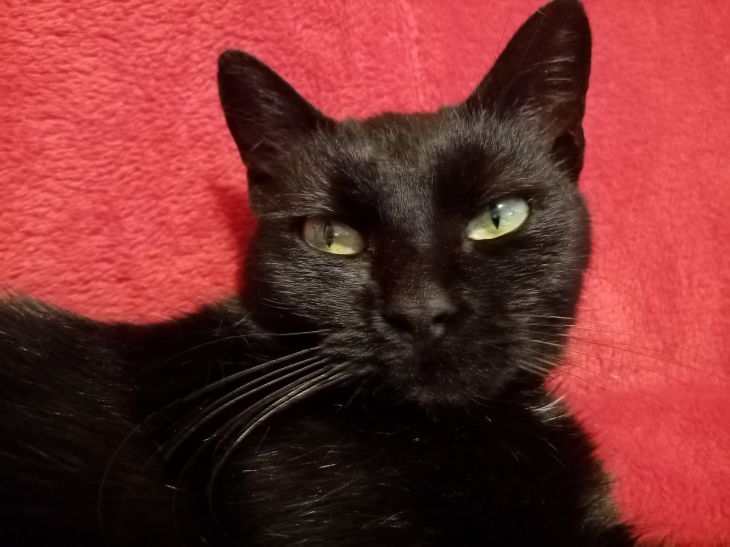Why do cats hit with their paws?
You've probably wondered why cats treat everything like a punching bag. Do they get angry? Do they think it's funny? Will they ever stop doing it?
Answering these questions requires a little understanding of cat anatomy and psychology. So let's get down to business and find out why cats paw.
As any cat owner knows, most cats have a strict "look at me, don't touch me" policy, and cats especially don't like anyone touching their paws.
The reason is simple - cats' paws and toe pads are extremely sensitive. Like their whiskers, their paws contain a huge number of nerve receptors. These receptors help cats balance, hunt, explore, and understand their surroundings.
They also use their paws to express themselves and their feelings, including playfulness, fear, boredom, and other emotions.

In other words, cats' paws are one of their most important tools for survival and communication with their environment. They've also learned to use them in a variety of ways, including walking, running, climbing, scratching, testing things, and even hitting, pushing, and swinging. However, as with any feline behavior, context is important to understand why they do it.
Here are some of the most common reasons why your pet may start hitting you with its paw.
1. Playful mood
Kittens, in particular, often do this as it is part of their natural play behavior, which often includes pouncing, biting, and chasing.
As cats age, most learn to tone down their playfulness (though some never do). But even adult cats will occasionally swat when they're feeling particularly playful or trying to get you to play with them.
2. They are trying to get your attention
Cats are independent creatures. But that doesn't mean they don't love or need attention from their humans.
In fact, some cats can become quite demanding when it comes to petting, playing, or simply being in the same room with a person. If they feel neglected, they may swat with their paw.
3. Curiosity
Cats are insatiably curious, but they are also one of the most cautious animals. That's why cats often push or hit objects they don't recognize. It's the perfect way for them to explore something without getting too close.
Will the object move? Does it make noise? Will it hit back? Does the object remain still after a good hit?
4. Overexcitement
Cats can also suffer from "sensory overload," such as when there is too much movement or noise around them.
It can also be due to whisker fatigue, where a cat's whiskers are constantly exposed to stimuli (like petting or moving objects) and they can't process everything. Some cats also have a low touch threshold, so even gentle touching can cause overstimulation.
In these cases, the cat may lash out to protect itself from the irritant, and this is its way of saying "Enough!"
Be careful when your cat waves its paw, because it may not just be playful, but also angry.
Signs of aggression or body postures that simply tell you to back off:
- wagging tail;
- flattened or backward-turned ears;
- hisses or growls;
- shows nails;
- arched back.
If you notice any of these body positions in your cuddle buddy, just leave him alone for a while to let him calm down.
5. They redirect their aggression
If cats notice something outside, such as a bird or another cat, they may become frustrated because they can't reach the moving object. This can lead to redirected aggression, where they take out their frustration on the nearest moving object. This could be you, another pet in the house, or even an inanimate object.
6. They are afraid or stressed.
Cats are creatures of habit and don't handle change very well. So it's no surprise that they may swat when they're scared or stressed. This can be caused by anything from moving to a new home to the addition of a new pet or family member.
When this happens, it’s important to give your cat time to adjust and make her feel as safe and comfortable as possible. Try not to do anything that might cause her more stress, such as forcing her into social situations before she’s ready. Give her extra love and attention as she gets used to the new situation.
7. She's in full combat mode.
If you've ever seen cats fight, you've probably noticed this aggressive flailing of their paws in the air. That's because it's an effective way to inflict damage on your opponent while maintaining a safe distance.
This position also allows them to maintain balance and stay on their feet, which is important in a fight. Cat slaps can sometimes be unpleasant, especially if you are the one experiencing them, but that is part of what makes them such amazing (and funny) creatures.
As long as you understand why your cat is behaving this way and take precautions to prevent accidents, you shouldn't have to worry too much about it. And of course, if you're concerned about your cat's behavior, always consult your veterinarian.
